Building the state apparatus in the years 1945 - 1954 under the leadership of President Ho Chi Minh
Phase 1945 - 1946
During this period, Vietnam's political system had many active parties, in which, besides the pro-revolutionary parties (notably the Vietnam Democratic Party and the Vietnam Socialist Party), there were also a number of opposition and counter-revolutionary parties coexisting in the system (typically the Vietnam Nationalist Party (Viet Quoc) and the Vietnam Revolutionary Alliance (Viet Cach). The chaotic political context and pressure from reactionary forces at home and abroad forced the Indochinese Communist Party to decide to declare its self-dissolution in November 1945, essentially withdrawing into secret activities to continue leading the revolution.
After the victory of the August Revolution, on August 28, 1945, the Vietnam National Liberation Committee reformed itself into the Provisional Government of the Democratic Republic of Vietnam; Ho Chi Minh held the position of President of the Provisional Government and Minister of Foreign Affairs . Because the forms of government before the August Revolution were not yet complete state apparatuses, nor were they elected by the people through general elections, one of the most urgent tasks of the Provisional Revolutionary Government was to urgently prepare the necessary conditions to organize a nationwide general election as soon as possible. On September 3, 1945, in the first meeting of the Provisional Government, President Ho Chi Minh pointed out: “Before, we were ruled by an autocratic monarchy, then by an equally autocratic colonial regime, so our country did not have a Constitution. Our people did not enjoy democratic freedom. We must have a democratic constitution. I propose that the Government organize a GENERAL ELECTION with universal suffrage as soon as possible” (1). The Provisional Government clearly demonstrated its determination through the promulgation of a series of policies, creating a legal framework and preparing the necessary conditions for this particularly important event.

The First Session, the First National Assembly - the first National Assembly of the Democratic Republic of Vietnam after the General Election on January 6, 1946, at the Hanoi Opera House_Photo: Document
However, the sabotage of hostile and reactionary forces has greatly hindered the process of organizing the General Election. The distorted arguments of the reactionary forces revolved around issues such as "calling for a boycott of the General Election because our people's intellectual level is still low (!), over 90% of the population is illiterate and therefore does not have the capacity to exercise their civil rights, that we need to focus on fighting the French invaders and not waste time on elections, etc. and etc." (2). The purpose of Viet Quoc, Viet Cach and other sabotage groups is to prevent the legitimization of the revolutionary government, because that will almost certainly indirectly eliminate most of them from the country's political life. Fighting against the reactionary forces, the newspapers Cuu Quoc and Su That have continuously published articles clearly stating the revolutionary nature of the provisional government, contributing to smashing the baseless arguments of the hostile forces. President Ho Chi Minh affirmed: “The general election is an opportunity for the entire nation to freely choose talented and virtuous people to shoulder the country's affairs. In the general election, anyone who wants to take care of the country has the right to run for election; anyone who is a citizen has the right to vote. Regardless of gender, rich or poor, religion, race, class, or political party, anyone who is a Vietnamese citizen has these two rights. Therefore, the general election means freedom, equality; it means democracy, and solidarity” (3).
The struggle was not only heated on the propaganda front, but also fierce in the negotiation and bargaining. In order to create a stable atmosphere for the General Election, under the leadership of President Ho Chi Minh, the Central Committee of the Indochinese Communist Party and the Provisional Government advocated making concessions and reconciling with the opposing forces. On December 2, 1945, the Government signed with Viet Quoc and Viet Cach a Solidarity Measure consisting of 14 main articles and 4 sub-articles, thereby recognizing 70 unelected seats for them, establishing a Provisional Coalition Government so that Viet Quoc and Viet Cach could hold some seats in the Government.
Thanks to the necessary concessionary policies, both flexible and firm and resolute, President Ho Chi Minh and the Provisional Government were able to gather the solidarity and support of the people, minimize the enemy's sabotage, and thereby carry out the first general election in the history of Vietnam as quickly as possible. The above policies, strategies and measures "frustrated the plot of the Chiang army to destroy the people's government, ensuring that our people could concentrate their resistance against the invasion of French colonialism in the South. The people's government was not only maintained but also consolidated in all aspects" (4). On January 6, 1946, the general election took place in an exciting atmosphere of the entire people. Although in all three regions, reactionary and hostile forces always fiercely opposed, especially in the South, where people had to go to vote under the enemy's bombs and bullets, the election still ended successfully. In summary, “in general, in all 71 provinces and cities nationwide, 89% of the total voters went to vote, generally 80%, many places reached 95%. Except for some places that had to hold additional elections, the vast majority of localities only voted once. The whole country elected 333 delegates, of which 57% belonged to different parties, 43% were non-partisan, 87% were workers, farmers, and revolutionary soldiers, 10 were women, and 34 were ethnic minority delegates” (5).
After the General Election ended, the Government urgently prepared for the first session of the first National Assembly. After the efforts of President Ho Chi Minh and the Government to negotiate and discuss with the opposition forces, on February 25, 1946, the joint conference between the Viet Minh, the Democratic Party, the Viet Quoc and the Viet Cach agreed to propose to the National Assembly the following main contents (6): 1- Establish an official coalition resistance government consisting of 10 ministries, of which the Ministry of National Defense and the Ministry of Interior were held by non-partisan officials, the Ministry of Finance, the Ministry of Transport and Public Works, the Ministry of Education and the Ministry of Justice were held by the Viet Minh and the Democratic Party, the Ministry of Foreign Affairs, the Ministry of Economy, the Ministry of Social Affairs and the Ministry of Agriculture were held by the Viet Quoc and the Viet Cach, the Ministry of Transport and Public Works and the Ministry of Agriculture were reserved for the delegates from the South; 2- Establish a Resistance Committee to focus on resistance work; 3- Establish a National Advisory Group headed by Supreme Advisor Vinh Thuy.
On March 2, 1946, the first session of the National Assembly had a great historical significance. Although it had not yet discussed major policies, the National Assembly had established a number of important State agencies: the National Assembly Standing Committee, the Advisory Group, the Resistance Committee, and most importantly, the Resistance Coalition Government chaired by Ho Chi Minh. The establishment of the Resistance Coalition Government, the governing body of politics, military, economy, culture, society, and the general mobilization of human resources and national resources, was a correct decision of the National Assembly at that historical moment. Thanks to that, the State apparatus at the Central level was further perfected. Delegating more power to the Government helped "ensure the Government had enough prestige and effectiveness to organize the people to fight for resistance, build the country, carry out all domestic and foreign functions and tasks, first of all negotiating to implement the policy of temporary peace with France, continuing to consolidate the revolutionary government, strengthening the strength, preparing forces to fight to protect the fatherland when the situation forced our army and people to fight for resistance throughout the country" (7).
The second session of the first National Assembly was another important milestone in the process of consolidating the state apparatus under the leadership of President Ho Chi Minh, first of all at the central level. During the meetings and discussions, the delegates showed progress in both their sense of responsibility and the spirit of an elected representative with enthusiastic opinions on many major issues of the country. The National Assembly authorized President Ho Chi Minh to form a new government and vote to approve the list of the new government. Commenting on this government, President Ho Chi Minh declared: “The following government must be a government of national unity and non-partisan talent... According to the resolution of the National Assembly, the following government must be a government that knows how to work, is courageous, and is determined to pursue the internal goals of construction and external goals of independence and unification of the country” (8).
The 1946 Constitution, the first Constitution of the new Vietnam, was drafted by the Constitution Drafting Subcommittee headed by President Ho Chi Minh, and was approved by the 1st National Assembly on November 9, 1946. This was the first legal document that fully defined the structure and organization of the Democratic Republic of Vietnam. The nature of this state is clearly stated in Article 1 as follows: “Vietnam is a democratic republic. All power in the country belongs to the entire Vietnamese people, regardless of race, gender, rich or poor, class, or religion” (9). Regarding the organization of the state apparatus at the central level, the People's Parliament is defined as the highest authority, elected by Vietnamese citizens, with the right to resolve all common issues for the whole country, set laws, vote on the budget, and approve treaties signed by the Government with foreign countries. The National Assembly elects a Speaker, two Vice Speakers, 12 official members, and 3 alternate members to form the Standing Committee (Article 27)(10). The Government consists of the President, the Vice President, and the Cabinet (including the Prime Minister - the head of the Cabinet, and the Ministers and Deputy Ministers) (Article 44)(11). All members of the Government, except the Vice President and Deputy Ministers, must be National Assembly deputies. The President has the right to choose the Prime Minister, and the Prime Minister has the right to choose the Ministers for the National Assembly to vote on. The Judicial branch includes the Supreme Court, the Courts of Appeal, the Courts of Second Instance and the Courts of First Instance; judges are directly appointed by the Government, and when trying crimes, there must be the participation of people's judges (Articles 64 and 65)(12). At the local level, the system of state agencies includes the People's Council, the Administrative Committee, the Court (second level - provincial and city courts hear appeals, district courts hear first instance trials, and the judicial board at the commune level).
Period 1946 - 1954
Due to the requirements of the resistance war against French colonialism, the state apparatus from the central to local levels was basically established according to the 1946 Constitution and did not have the conditions to operate as a normal civil government. With the characteristics of a resistance National Assembly, at the end of December 1946, the 1st National Assembly of Vietnam reached a high consensus on concentrating power in the Government, only maintaining the Head of the National Assembly Standing Committee with the Government to ensure the role of the National Assembly in major national policies; while other National Assembly deputies would proactively complete their tasks depending on their capacity, position and specific resistance circumstances. After that, according to actual developments, the National Assembly's representatives working with the Government were sometimes expanded to the National Assembly Standing Committee (as decided in February 1950 including Bui Bang Doan, Ton Duc Thang, Ton Quang Phiet, Duong Duc Hien, Tran Huy Lieu, Pham Ba Truc) or more broadly, the National Assembly Standing Committee. That shows that the most important characteristic of the organization of the Vietnamese state apparatus during this period was that "due to the war situation, the battlefield was divided, the resistance work on all fronts was very urgent, so the National Assembly did not have the conditions to meet regularly as in peacetime. Power was concentrated in the Government" (13).
In such conditions, President Ho Chi Minh, as the head of the Government, continued to shoulder great historical responsibilities to ensure that the state apparatus was built in a direction that met the requirements and tasks of resistance and nation building. Under the direction of President Ho Chi Minh and the Central Committee of the Indochinese Communist Party, after the nationwide resistance war broke out on December 19, 1946, the state apparatus was basically converted to a wartime model: at the central level, it consisted of the Resistance Government and the National Assembly Standing Committee; at the local level, it consisted of Resistance Committees. To continue perfecting the wartime state apparatus, President Ho Chi Minh added positions and agencies specializing in resistance work through many important decisions, such as signing Decree No. 110/SL, dated January 20, 1948, to confer the rank of General on Vo Nguyen Giap, appointing General Vo Nguyen Giap to hold the position of Minister of National Defense and Commander-in-Chief of the army in July 1948; signing Decree No. 206/SL, dated August 19, 1948, establishing the Supreme National Defense Council with Ho Chi Minh as Chairman; signing Decree No. 141/SL, dated February 16, 1953, establishing the Ministry of Public Security, then through the Government Council to change the Ministry of Public Security to the Ministry of Public Security in June 1953;...
Along with the resistance war, President Ho Chi Minh also focused on continuing to build a state apparatus in the direction of the rule of law. For example, to improve the effectiveness of drafting legal documents and amending the Constitution if necessary, President Ho Chi Minh signed Decree No. 72/SL, dated June 18, 1949, establishing the Judicial Council chaired by the Ministry of Justice (since 1950, this Council has been under the direction of the National Assembly Standing Committee). Despite the difficulties in wartime conditions, the Government and the National Assembly Standing Committee have continued to maintain the building of a new democracy at the grassroots level. In addition to organizing the re-election of provincial and communal People's Councils after the outbreak of the resistance war, President Ho Chi Minh also directed the maintenance of close communication channels between the central government and local governments and resistance organizations, demonstrated through events such as receptions and working sessions between representatives of the Government and the National Assembly with the delegation of the South Central Coast Administrative Resistance Committee (September 1949), the Southern delegation (October 1949); delegations representing the Government and the National Assembly visited the bases (in the Viet Bac Inter-zone, Inter-zone III, Inter-zone IV) in 1951 to grasp the actual situation and explain the new policies of the Central Government;... Another important typical event demonstrating the effort to ensure the spirit of the rule of law in the face of wartime challenges was the organization of the 3rd session of the 1st National Assembly in Viet Bac from December 1 to 4, 1953. Despite numerous difficulties due to the fierce resistance of the enemy, convening the National Assembly at this time was a mandatory requirement, because only the plenary session of the National Assembly had the authority to consider and pass the Land Reform Law - a particularly important policy in the period of 1953 - 1956. After being voted on by the National Assembly, this law was officially promulgated by Decree No. 197/SL, dated December 19, 1953, of the President of the Democratic Republic of Vietnam. This was the premise for piloting rent reduction and land reform campaigns from December 25, 1953 to mid-1954, creating more motivation for the masses to contribute manpower and resources to the frontline, contributing to the historic Dien Bien Phu victory on May 7, 1954.
During this period, in order to build a clean and strong state apparatus, President Ho Chi Minh paid special attention to the training and fostering of cadres, civil servants and those working in public agencies, combining with strict punishment of cases of degeneration and corruption. Many important theses and works expressing Ho Chi Minh's thoughts on cadres, cadre work and corruption prevention and control were born during this period, typically: "For a good party member and cadre to become a true revolutionary, there is nothing difficult. That is entirely up to the heart. If the heart only knows how to work for the Party, for the Fatherland, for the people, then one will progress to the point of being impartial and selfless. If one is impartial and selfless, then one's shortcomings will become less and less, and the following good qualities will increase more and more. In short, these good qualities include five things: humanity, justice, intelligence, courage, and integrity" (14); “Heaven has four seasons: Spring, Summer, Fall, Winter. Earth has four directions: East, West, South, North. People have four virtues: Diligence, Thrift, Integrity, and Uprightness. Lacking one season, the sky cannot be made. Lacking one direction, the earth cannot be made. Lacking one virtue, the person cannot be made” (15); “Anyone, in any position, doing any work, facing any circumstances, must have a sense of responsibility... Bureaucracy, commandism, subjectivity, haste, and selfishness are completely contrary to a sense of responsibility” (16); “Corruption, waste and bureaucracy, whether intentional or not, are allies of colonialism and feudalism. Because it delays our resistance and nation-building. It ruins the pure spirit and austerity of our cadres. It undermines our revolutionary ethics of diligence, thrift, integrity and uprightness... For those reasons, fighting corruption, waste and bureaucracy is as important and urgent as fighting the enemy on the front line” (17)... Along with a very profound and scientific system of guiding viewpoints, in his role as head of the Government, President Ho Chi Minh also made great efforts to participate in the work of preventing and combating corruption through measures such as issuing Decree No. 138/SL, dated January 18, 1949, on the organization of the Government Inspectorate, allowing the Government Inspectorate to inspect the integrity of administrative resistance committees and state officials (previously there was a Special Inspection Board established by President Ho Chi Minh through Decree No. 64/SL, dated November 23, 1946, this Committee has the right to suspend and detain any employee in the Government or People's Committee who commits a crime before bringing him to trial.
Some experiences for the current stage
Looking back at the process of President Ho Chi Minh leading the construction of the Vietnamese state apparatus from 1945 to 1954, we can draw some important experiences for the current period:
Firstly, to successfully build a socialist rule-of-law state, the spirit of the rule of law combined with a civilized legal system must be given top priority. Although he did not officially use the concept of a rule-of-law state, President Ho Chi Minh's thoughts and activities during his lifetime deeply demonstrated the connotation of a rule-of-law state. "As a political leader, President Ho Chi Minh made decisions and led the construction of the rule of law of the new regime, focusing on building a legitimate, constitutional state and a democratic legal system" (18). What President Ho Chi Minh conceived and implemented during the years 1945 - 1954 showed that an extremely important condition of a rule-of-law state is to have a strong enough legal mechanism so that those working for public agencies, no matter how high their positions, must strictly comply with the law. Along with that, the state apparatus and legal system ensuring the broad mastery of the people is also another indispensable aspect to demonstrate the progress of the socialist rule of law state.

Politburo member and National Assembly Chairman Vuong Dinh Hue meets voters in Hai Phong city_Photo: VNA
Second, organizational streamlining is a necessary premise for an effective and efficient state. During the years 1945 - 1954, due to "seeing the risk of "bloating" the bureaucratic administrative apparatus in our country very early" (19), President Ho Chi Minh repeatedly mentioned the need to streamline the organization of the state apparatus. In December 1945, when asked why the coalition government of resistance had only 10 ministries, President Ho Chi Minh replied: "Because our country is small, we do not need many ministries" (20). In August 1951, President Ho Chi Minh pointed out, "Practice rectifying the payroll, to reduce contributions to the people and add more forces to the work of increasing production" (21). In March 1952, President Ho Chi Minh gave the definition and importance of streamlining the state apparatus, “Government agencies and organizations, economic agencies and committees need to improve productivity, reduce the number of people (streamlining). Currently, our agencies have many people, little work, and waste a lot of money... No matter what, we must find ways to reduce the number of agencies. We must use the Bolshevik spirit to practice a strict thrift regime. If we do not want to use our capital for miscellaneous things, we must immediately practice that regime” (22).
Third, along with professional competence, the integrity of revolutionary ethics of individuals and organizations is a crucial requirement for building a clean state apparatus according to Ho Chi Minh's thought. On September 19, 1945, President Ho Chi Minh declared, "The people's government must always put the people's interests above all else. Whatever is beneficial to the people must be done. Whatever is harmful to the people must be avoided" (23). At the second session of the first National Assembly at the end of 1946, President Ho Chi Minh also affirmed, "Although the resolution did not mention or mention the two words integrity, I would like to declare before the National Assembly, before the nation and before the world: The following government must be an honest government" (24). In June 1949, President Ho Chi Minh emphasized, "The law must severely punish dishonest people, regardless of their position or profession" (25). History has proven that the valuable experiences and lessons learned from President Ho Chi Minh's leadership in building the state apparatus during the years 1945 - 1954 still hold value for Vietnam's current innovation cause./.
Associate Professor, Dr. PHAM QUOC THANH - Dr. PHUNG CHI KIEN
Party Secretary, Principal of Thai Binh University - University of Social Sciences and Humanities, Vietnam National University, Hanoi
----------------------------
(1) Ho Chi Minh: Complete Works, National Political Publishing House Truth, Hanoi, 2011, vol. 4, p. 7
(2) National Assembly of the Socialist Republic of Vietnam - National Assembly Office: History of the Vietnamese National Assembly 1946 - 1960, National Political Publishing House, Hanoi, 2003, p. 33
(3) Ho Chi Minh: Complete Works, op. cit., vol. 4, p. 153
(4) See: The Central Council directed the compilation of national textbooks on Marxist-Leninist sciences and Ho Chi Minh thought: Textbook on History of the Communist Party of Vietnam, National Political Publishing House, Hanoi, 2004, p. 129
(5) National Assembly of the Socialist Republic of Vietnam - National Assembly Office: History of the National Assembly of Vietnam 1946 - 1960, op. cit., p. 52
(6) Le Mau Han (Editor-in-Chief): History of the Vietnamese Government, National Political Publishing House, Hanoi, 2005, vol. 1: 1945 - 1955, p. 57
(7) National Assembly of the Socialist Republic of Vietnam - National Assembly Office, History of the National Assembly of Vietnam 1946 - 1960, op. cit., p. 80
(8) Ho Chi Minh: Complete Works, op. cit., vol. 4, p. 478
(9), (10), (11), (12) Constitution of the Socialist Republic of Vietnam, Labor Publishing House, Hanoi, 2009, pp. 6, 11, 15, 21
(13) National Assembly of the Socialist Republic of Vietnam - Office of the National Assembly, op. cit., p. 123
(14) Ho Chi Minh: Complete Works, op. cit., vol. 5, p. 291
(15) Ho Chi Minh: Complete Works, op. cit., vol. 6, p. 117
(16), (17) Ho Chi Minh: Complete Works, op. cit., vol. 7, pp. 249, 358
Source


![[Photo] Prime Ministers of Vietnam and Thailand visit the Exhibition of traditional handicraft products](https://vphoto.vietnam.vn/thumb/1200x675/vietnam/resource/IMAGE/2025/5/15/6cfcd1c23b3e4a238b7fcf93c91a65dd)

![[Photo] National Assembly Chairman Tran Thanh Man meets with Thai Prime Minister Paetongtarn Shinawatra](https://vphoto.vietnam.vn/thumb/1200x675/vietnam/resource/IMAGE/2025/5/15/e71160b1572a457395f2816d84a18b45)

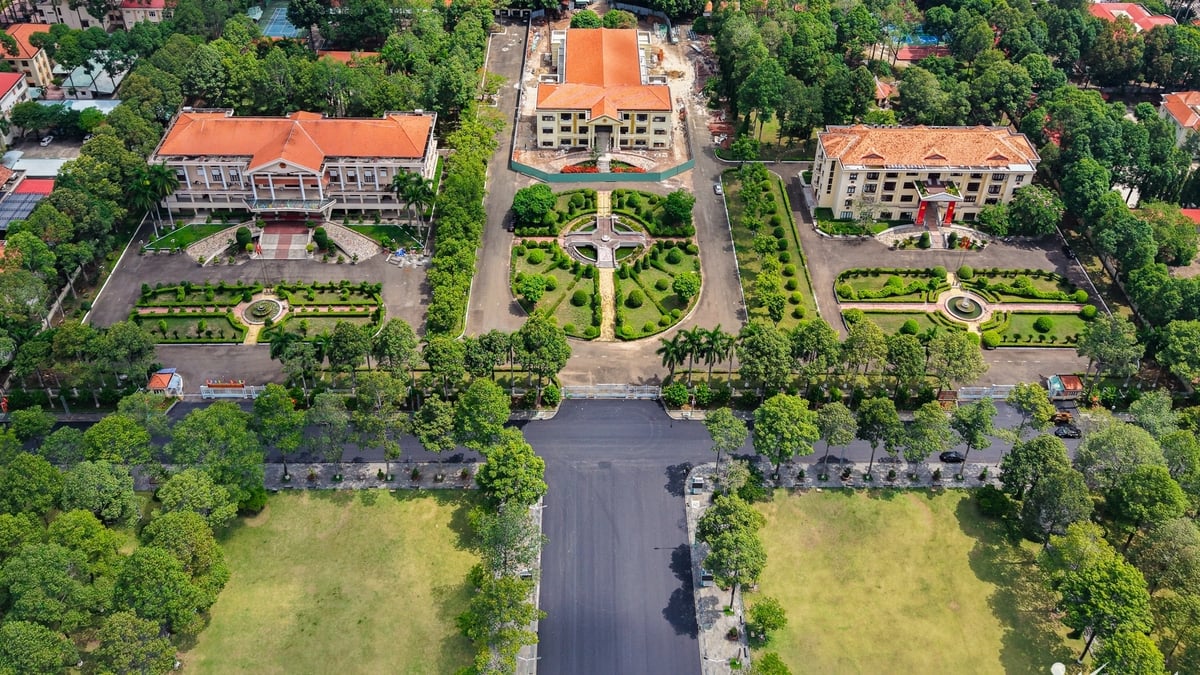





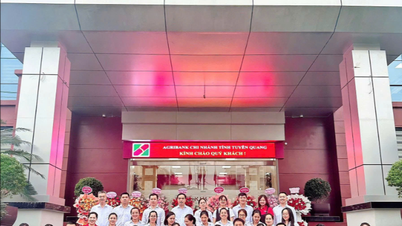

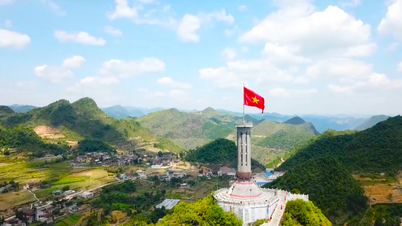
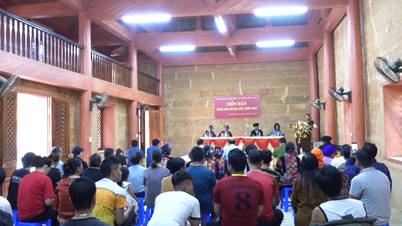



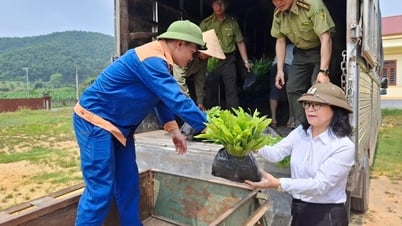

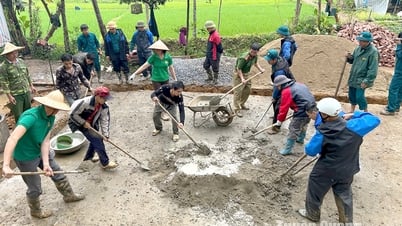





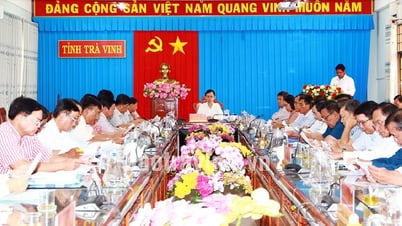








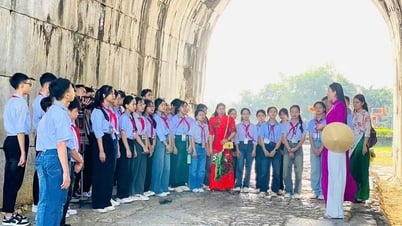






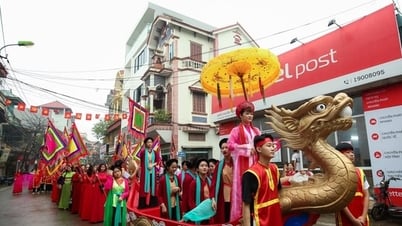





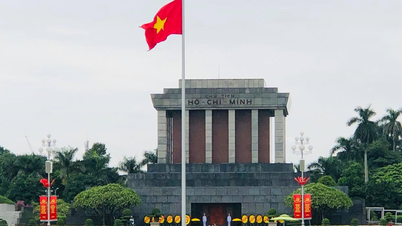

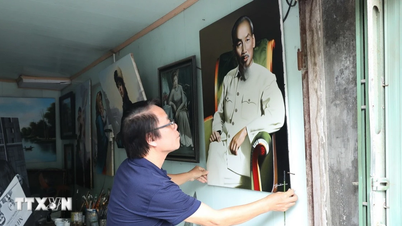

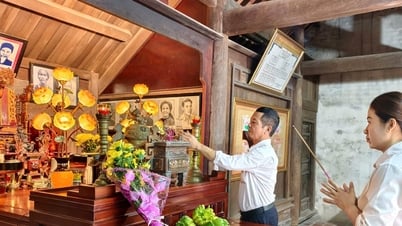

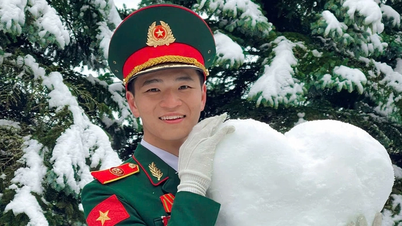







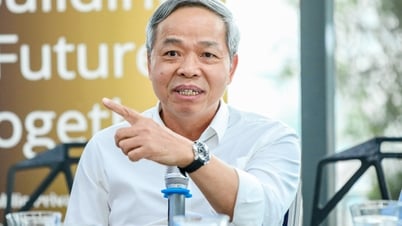



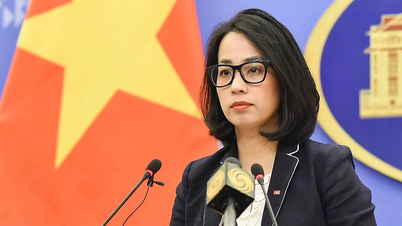


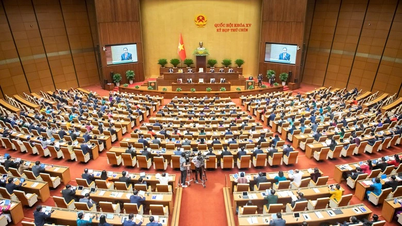

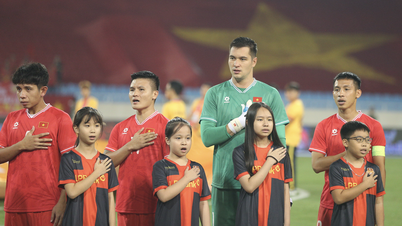
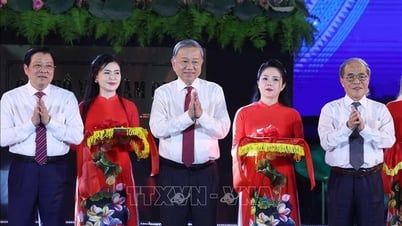



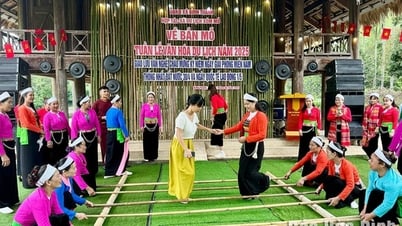
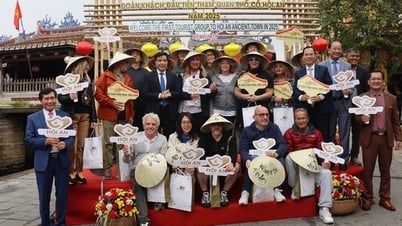

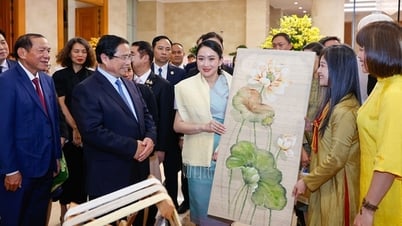

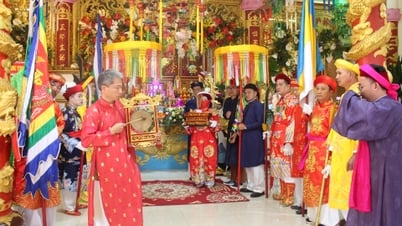

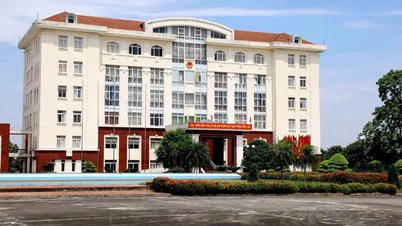


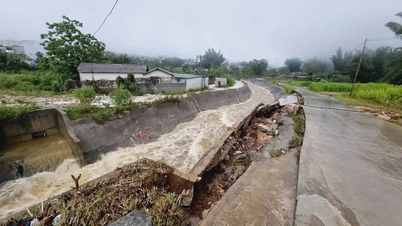








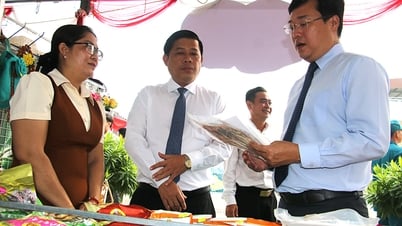
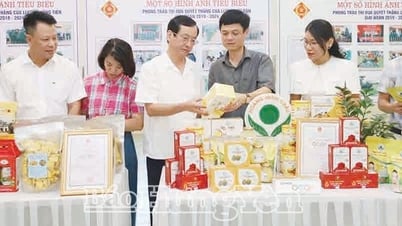

Comment (0)